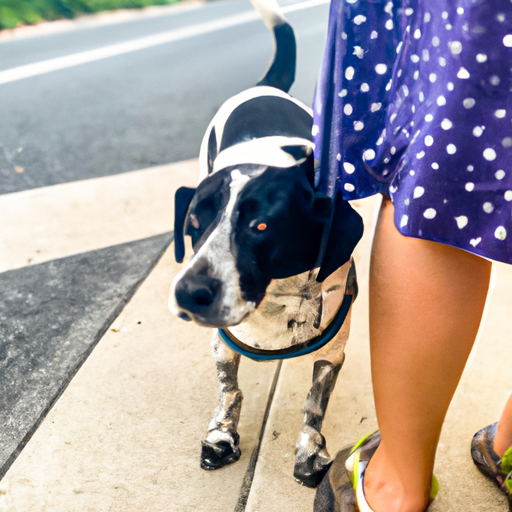Understanding the Stray Dog Situation
When you’re faced with the issue of stray dogs in your neighborhood, it’s important to approach the situation with compassion and understanding. Stray dogs aren’t nuisances by choice; they are often victims of abandonment, neglect, or circumstances beyond their control. Here are some points to consider:
- Stray dogs might be scared and defensive, which can lead to unpredictable behavior.
- They might carry diseases, which can be a risk to your own pets or family.
- Stray dogs contribute to the overpopulation problem, leading to more strays.
Approaching Stray Dogs Safely
You are a caregiver. You have an innate desire to help. But remember, safety comes first. Here are some steps to approach stray dogs safely:
- Do not approach directly: Dogs can interpret direct approach as a threat. Instead, approach sideways or indirectly.
- Use a gentle voice: Use a calm and soothing voice to ease the dog’s fear.
- Do not make direct eye contact: Direct eye contact can be interpreted as a challenge or a threat.
Contacting Animal Rescue Services
Animal rescue services are equipped to handle stray dogs safely and humanely. Here’s how you can reach out to them:
- Find local animal rescue services: They are typically listed online. Keep a list of their contact numbers handy.
- Provide detailed information: Give them a detailed description of the dog, its location, and its behavior.
Taking Active Steps in Your Community
As a caregiver, you can play a pivotal role in your community. Here are some ways you can help:
- Educate people: Talk about responsible pet ownership, the importance of spaying/neutering, and the consequences of abandoning pets.
- Organize a neighborhood watch: Keep an eye out for strays, lost pets, or signs of animal abuse.
- Hold adoption drives: Partner with local animal shelters to hold adoption drives.
Creating a Safe Space for Stray Dogs
If you have the resources, consider creating a safe space for stray dogs in your property. This includes:
- Providing shelter: A small kennel or a shaded outdoor area can provide a temporary home.
- Providing food and water: Regular meals and clean water can keep the dogs healthy.
- Providing medical care: Basic medical care like vaccinations and deworming can prevent diseases.
| Safety Measures | Description |
|---|---|
| Shelter | A kennel or shaded outdoor area |
| Food and Water | Regular meals and clean water |
| Medical Care | Vaccinations and deworming |
Frequently Asked Questions
Q: Can I just adopt a stray dog?
A: Yes, but it’s advised to have the dog checked by a vet first for any diseases.
Q: Is it safe to feed stray dogs?
A: Yes, but be careful not to make them dependent on you for food, unless you’re planning to adopt them.
Q: What should I do if the stray dog is aggressive?
A: Do not approach. Contact animal control or a local animal rescue immediately.
Q: Can children approach stray dogs?
A: It’s not recommended. Children may not understand how to approach safely, and a scared dog can react unpredictably.
Q: How can I prevent stray dogs from entering my property?
A: A secure fence is the most straightforward solution. Avoid leaving food outside that might attract them.



